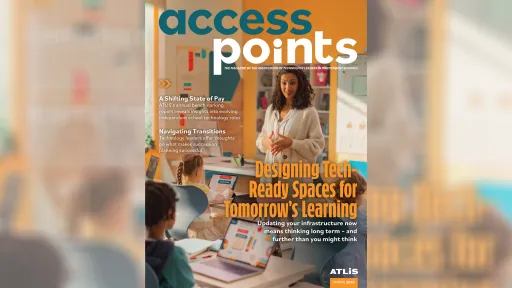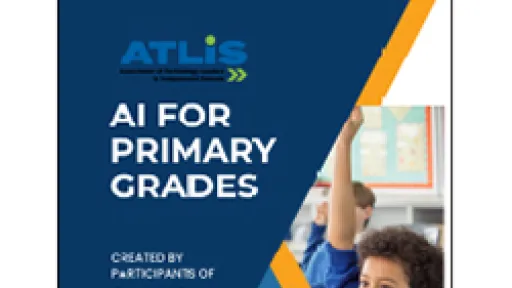It has been more than a decade since digital citizenship curriculums started making their way into our schools, the broader educational technology spaces, and conversations. Educators, families, and schools began to grapple with the need to teach children how to use technology responsibly in order to learn and participate productively in all aspects of their lives, including their growing online and screen-based spaces.
It was difficult, even then, to fully imagine how completely the digital world would integrate into every aspect of our lives. Facebook’s “Like” button was only a few years old, unlimited text messaging was a recent offering by mobile carriers, and the concepts of algorithmically driven ads and “persuasive technology” were still years away from affecting our (still mostly) chronological newsfeeds.
In the educational technology field, we continue to leverage time-tested thought partners and curriculum developers such as Common Sense Media and the International Society for Technology in Education to help guide our hands-on work with students. These pioneers gave us the opportunity and tools to begin building competencies in our students that would serve them through the rapid changes of digital and analog worlds. Topics such as online interactions, media balance, privacy, literacy, communication, collaboration, and digital footprints offer opportunities to think deeply about how our digital lives intersect with our overall lived experiences in a broadly accessible way.
As the technologies we use for learning, engaging, and socializing became more complex and the economic models that supported them became more opaque, the gap between meaningful engagement with students about screen use and their actual screen time became undeniable. At Collegiate School, this forced us to grapple with questions about whether our touch points with students on their personal and professional technology use were having the intended impact. Additionally, it was hard to deny the struggles with designing and implementing high-quality digital citizenship content for the middle and upper grades. Many older students struggled to empathize with content designed for a national audience that seemed far removed from their own lived experiences.
In short, digital citizenship curriculums, no matter how thoughtfully designed and faithfully implemented, often failed to connect with older students in a way that fostered productive conversation. For that reason, we made three major changes:
- We moved the lessons into health and wellness. At least once in grades five through 12, we meet with students to discuss technologies’ impact on their health, and we include a two-week intensive in the ninth grade.
- We collect, anonymize, and use screen time data. Students fill out a regular survey asking them for their daily hours on screens and their most used apps as well as questions about their thoughts and concerns. We then build the curriculum around our students’ demonstrated needs.
- We connect both to economic structures. Much of our modern internet depends on data collection, personalized ads, and persuasive technologies. Demonstrating this to students with hands-on activities fosters the best conversations we’ve had to date.
Reframing Digital Citizenship
At Collegiate, we continue to leverage the concepts and tools aligned with digital citizenship to engage with our lower-school students because these lessons connect well with their developmental needs. However, these lessons do not have the same effect as our students get older. This — alongside the fact that research on adolescent mental health is beginning to paint a sobering picture of how social media, gaming, and AI can negatively affect children as they grow — has influenced our approach. These impacts extend beyond mere distraction; they now affect attention spans, self-image, academic outcomes, and social skills.
Framing digital education within the context of health and wellness offers us a powerful entry point. This approach allows us to tie lessons to the developmental and psychological theories that already form the framework for our other health priorities — namely, mental health, substance-use education, and healthy relationships. Additionally, adolescents find themselves mired in a digital world that demands near-constant engagementjust as they enter the developmental phase that prioritizes social connection and status. At this stage, they are more inward-facing and focused on their place in social circles and the world. Grounding lessons in their immediate experiences made the material significantly more impactful. Each lesson we teach begins with a conversation about brain science and human psychology that can be exploited by technology. These topics include:
- Human brain development: We begin by exploring major changes the human brain has faced from the massive changes brought on by farming to the invention of artificial light. We visualize just how many generations of human brains had to adapt to those changes compared with the handful of decades that span the invention of the internet to the regular use of AI.
- Dopamine reward loop: We look at the ways platforms and devices are designed to exploit the brain’s reward system, making it difficult to disengage.
- Top-down and bottom-up focus: The different ways our brains focus give a better understanding of why it often seems hard to pay attention. Top-down focus determines how much time we intentionally engage with a chosen task. Bottom-up focus is a survival mechanism designed to alert us to emergencies. We spend time discussing how our devices and their notification systems co-opt our bottom-up focus and ultimately undermine our ability to control our attention over time.
- Synaptic pruning: We explore how adolescence is a critical period for brain development, when frequently used neural pathways are strengthened and others are eliminated. We explore how excessive screen time can skew this process.
We use these principles to help students recognize the why behind their habits and empower them to make conscious choices about how and when they engage with technology.
Role of Data in Driving the Lessons
To make lessons compelling, we prioritized collecting and analyzing student phone-use data. Over three years, students have reported their screen time data at various points and answered survey questions connected to their digital lives. While consistently maintaining individual anonymity, we connect our lessons to specific screen time trends and outcomes for more targeted and authentic conversations.
This data-driven approach resonates with students, who often feel disconnected from abstract warnings about screen time tied to impersonal national averages and trends. For example, one classroom survey revealed that 49% of the students’ most-used app was TikTok, with Snapchat and YouTube closely behind. What followed was an exploration of each app, its terms of service, and how it monetizes its platform. We taught students how to access their data profiles and see the assumptions each app makes about them based on their interactions. This generated significantly more impactful conversations simply because the lessons and examples came from the room, not from a research firm or university looking at national trends.
Tech Economy
Beyond personal habits, we also delve into how the tech industry capitalizes on user behavior. Lessons on persuasive technology and the “attention economy” highlight how platforms are designed to shape opinions and behaviors for profit. For instance, students learn about the role of algorithms in curating feeds and how these systems can exploit their psychological vulnerabilities.
We spend a significant amount of time exploring the tools we use regularly in a judgment-free space. From social media and gaming accounts to the location tracking and geo-tagging services built into our devices, we consider how our digital footprints, the downstream effects of algorithms, and our highly individualized data profiles might unintentionally impact our time on devices, our choices, and our behaviors.
This broader perspective encourages critical thinking and ethical awareness, asking students to consider the need for systemic change and making healthier individual choices.
Moving Forward
As we continue to refine our digital health and wellness curriculum, we’re guided by a continued focus on data and strengthened community education.
By prioritizing health and wellness, we are hoping to create a sustainable, meaningful approach to digital education — one that acknowledges the challenges of our digital age, gives students the mindsets and tools they need, and empowers them to make choices that align with their mental and physical health.



